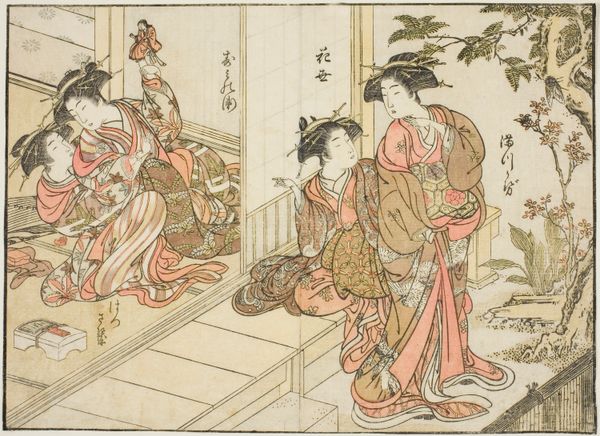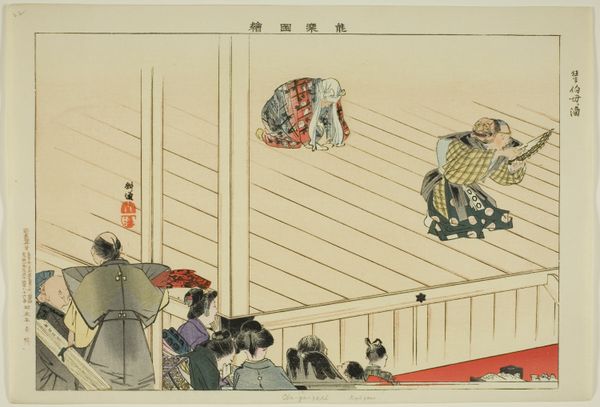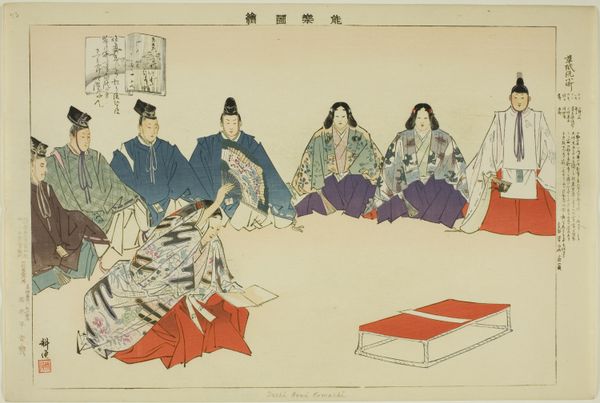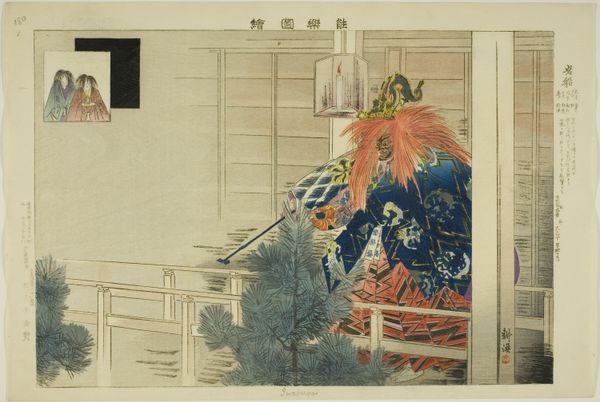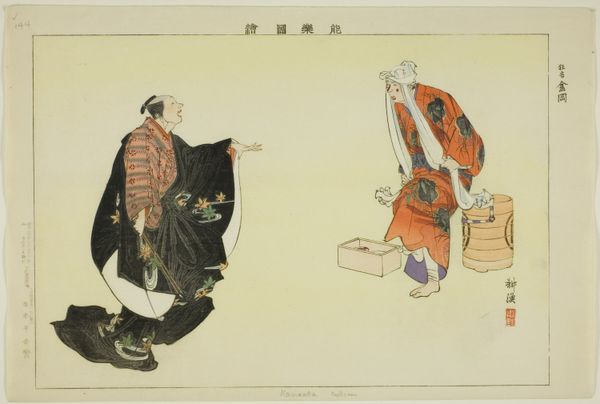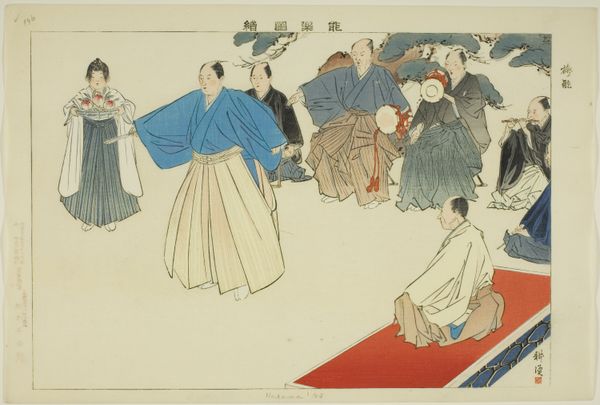
Kou, from the series "Pictures of No Performances (Nogaku Zue)" 1898
0:00
0:00
Dimensions: Approx. 25.2 × 37.4 cm (10 × 14 4/3 in.)
Copyright: Public Domain
Curator: This is "Kou, from the series 'Pictures of No Performances (Nogaku Zue)'," a woodblock print created in 1898 by Tsukioka Kōgyo. Editor: The composition immediately strikes me as theatrical. The costuming, the postures—there's a drama here that pulls you in. Curator: Exactly! Kōgyo was documenting Noh theatre, which had a resurgence in popularity during the Meiji period. His prints are invaluable records of this art form’s evolving cultural significance. Editor: The figure in the elaborate wig and patterned robe--it feels loaded with symbolic meaning. What can you tell me about the iconography? Curator: Noh theatre, born from ritualistic dances, held enormous social weight in Japan. Actors often wore masks representing specific archetypes. In “Kou,” we're likely witnessing a scene from a play steeped in Shinto or Buddhist philosophy. Editor: Fascinating. I’m drawn to the contrast between the masked figure, the sword that has botanical adornments and the understated observers. How did the Meiji Restoration influence this representation? Was this renewed interest a way to preserve a certain national identity? Curator: Absolutely. Following the Meiji Restoration, there was a conscious effort to redefine Japanese identity amidst rapid Westernization. Reviving and promoting Noh was, in many ways, an act of cultural preservation and nationalistic pride. Think of the gender and class dynamics involved. How was art both reflecting and shaping social strata at the time? Editor: Looking closely, one begins to realize it is not just a representation but also a historical document laden with nuances concerning power, ritual, and identity, carefully composed. Curator: Indeed. And it's through that intersection of history and visual storytelling that we can gain deeper insight into the artwork's lasting relevance and Kōgyo's intention. Editor: Well, my initial impression has definitely deepened. Now I appreciate the piece's many layered facets. It feels so much more intricate than I had originally perceived.
Comments
No comments
Be the first to comment and join the conversation on the ultimate creative platform.



